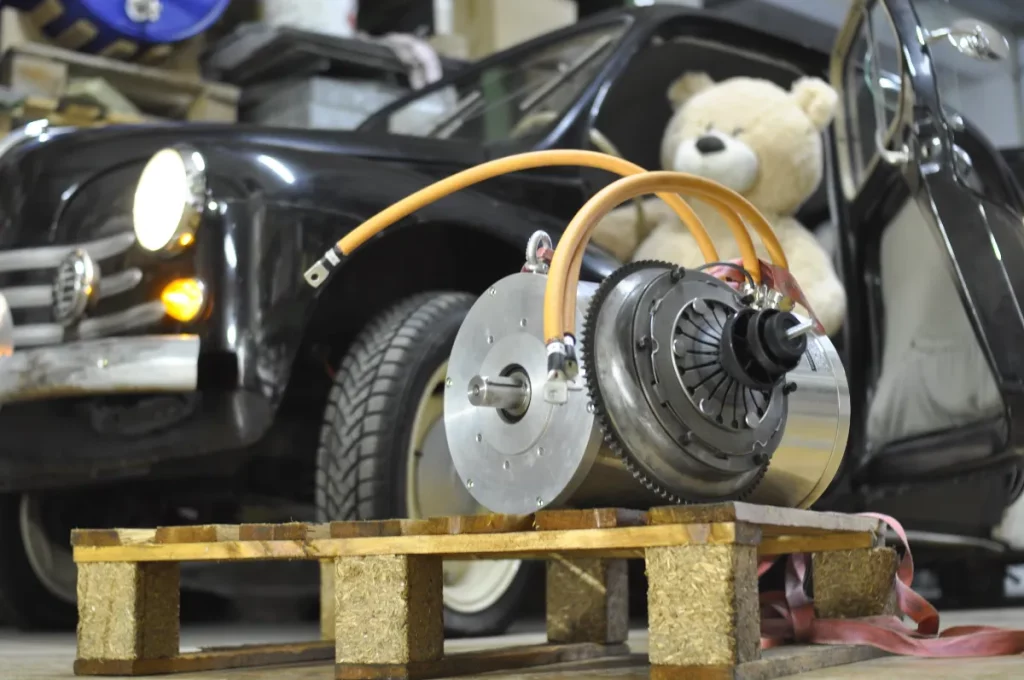Let’s talk about the motor options for the Renault 4CV.
I had four (and a half) parameters to consider:
1) power around 15 HP (+/- 10%, although there is some play with peak power and nominal power)
2) Voltage of 96V
3) CE conformity mark and documentation
4) air cooling
…and suitable dimensions to use the existing motor mounts (these were not super strict as I could have fabricated necessary mountings if needed)
The first idea was to use a LETRIKA/ISKRA motor of the type AMV7118, which can be found in the Renault Twizy. This motor however uses a different system voltage than I was planning.
I then got to know Erich from bdrive.ch who successfully converted a classic Mini into full electric drive and passed the homologations in Switzerland. He used a motor of the Italian manufacturer Fimea Engineering which comes with a full CE documentation and passed the Swiss testing procedures. The dimensions were super ideal, too, and it is an aircooled unit. And as I am living close to the Italian border anyway, that decided it for me!

This thing is perfect, and I am still convinced that it was the best choice for the Renault 4CV. The only little downside is its weight, which is over 60 Kg, but that’s the price of air-cooling I suppose.
If you have a quick glance at the technical specs, you will see that this motor fits perfectly to the original power output of the Renault 4CV engine. A bit more torque, which could also be limited through the controller settings. The problem with too much torque is that the original gearbox could be damaged, and the driveshafts could snap. This is a common problem with the Renault 4CV, the tuned or Gordini-prepared versions of the car were changing the driveshsafts for those of the Renault Dauphine, as these were more stable. And we’re still talking sluggish petrol engines here, not electric torque from 0 rpm!

The guys at Fimea were super supportive when placing the order which gave me further confidence. About a month later I went down to Milan to pick up my new motor!
Here’s the motor in my workshop, ready to be installed into the car:

As the motor is pretty heavy (about 66 kg), I used a forklift to lift the motor into the vehicle. On the far side you can see the adapter plate towards the gearbox.

And here you can see the whole drivetrain installed for the first time in the car. Note how perfectly the motor sits on the original motor mounts (the crossmember below the motor is actually the original part that used to support the petrol engine!)

Still super happy with my choice, I can recommend Fimea Engineering to anyone!


